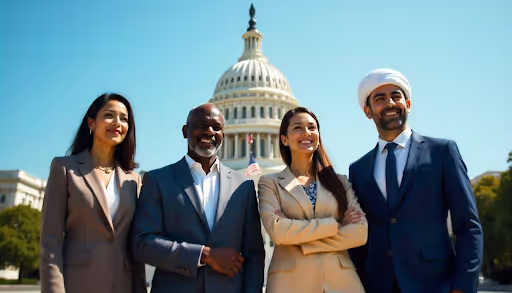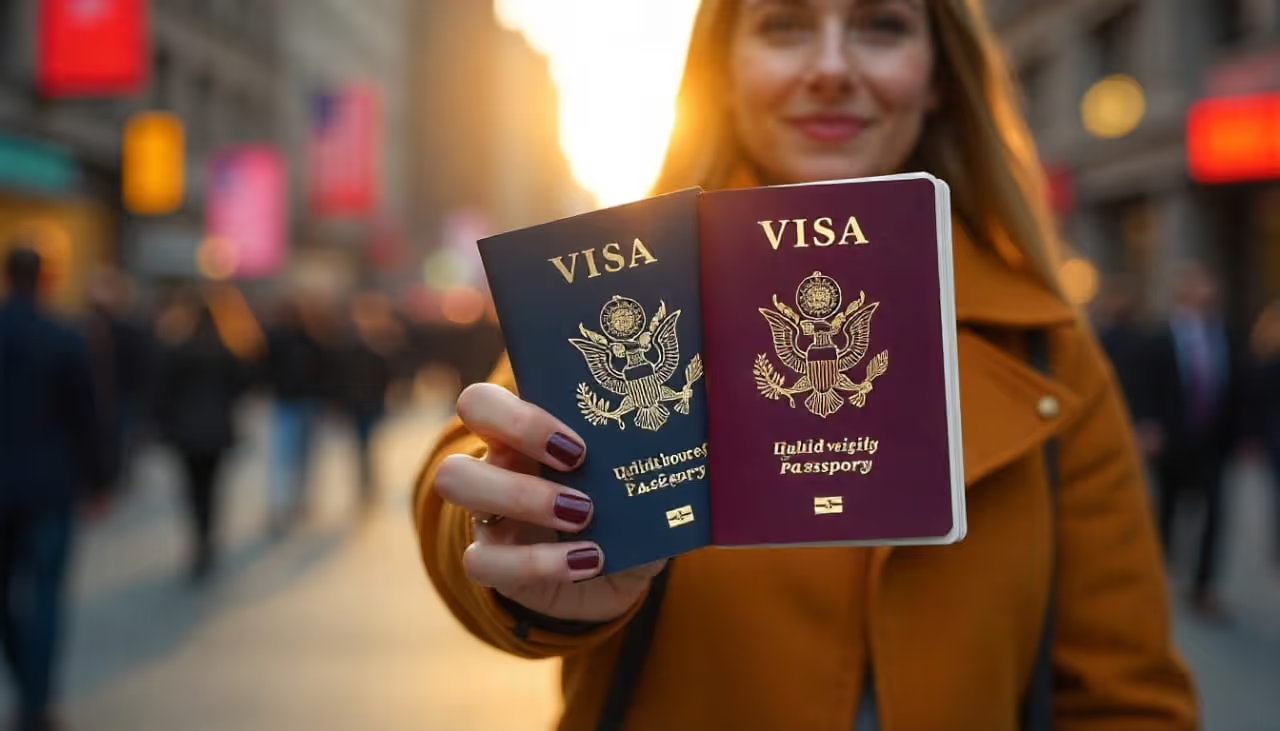.png)
.png)
Confused about the O-1 visa? Learn the truth behind top O-1 myths—including O-1 dependent work and O-1 visa transfer—and get expert help from Beyond Border to navigate your visa journey.

If you're considering the O-1 visa, chances are you've already heard a swirl of myths—from “you need an Oscar” to “your spouse can work freely.” The truth? The O-1 is an incredibly flexible and powerful U.S. visa, but it’s also wildly misunderstood.
Whether you're a rising startup founder, a researcher with peer-reviewed publications, or a creative with global press coverage, this guide is here to help you separate fact from fiction—so you can approach your O-1 journey with clarity and confidence.
Let’s bust the 10 most common O-1 myths—one by one.
While it’s true that O-1 status requires a high level of achievement, it’s not just for household names. In fact, most O-1 holders are professionals you won’t find in headlines: award-winning engineers, startup founders with successful exits, musicians with international gigs, or researchers cited in major journals.
If you’ve built a strong record in your field—through press, awards, publications, or impactful roles—Beyond Border can help you frame that story powerfully for your petition.

This one causes confusion constantly.
The answer is no—your spouse and children on O-3 status (the dependent category tied to your O-1) cannot work in the U.S. They can, however, attend school, travel freely, and stay with you throughout your O-1 validity.
If work authorization is essential for your spouse, you may want to explore green card options or other visa categories with more flexibility. Beyond Border can walk you through viable paths for dual-career families.
This myth is rooted in partial truth.
You can transfer your O-1 visa, but it’s not as simple as switching jobs. The new employer must file a new O-1 petition with USCIS. Your original visa isn’t “portable” the same way an H-1B is.
In short: you don’t need to leave the U.S. to switch sponsors, but your new employer needs to submit proper paperwork—ideally before you begin work with them. For founders, working under your own startup may also be possible with the right corporate structure and advisory.
Still unsure how to structure a transfer or new petition? Talk to Beyond Border for strategic guidance tailored to your next move.
This used to be a more common perception—but it’s far from accurate.
Yes, the O-1B subcategory covers creatives and entertainers. But the O-1A visa applies broadly to science, education, business, and athletics. That includes startup founders, AI researchers, product leads, and venture-backed CEOs.
In fact, the O-1A has become a go-to for high-achieving tech talent who don’t meet the requirements of H-1B or are out of lottery options.
Not entirely true.
It’s possible to apply for an O-1 visa with a U.S. agent or even your own business entity as the sponsor—if you structure it correctly. You’ll need to demonstrate employer-employee relationships, advisory oversight, and a legitimate business plan.
This is where expert support from Beyond Border really matters. Founder-led petitions need to be airtight, and even a small misstep in your structure could result in delays or denials.
Many O-1 visa holders later transition to green card categories like EB-1A or EB-2 NIW, using the same evidence (media, letters, contracts, etc.) from their O-1 case.
The O-1 is often a stepping stone—especially for those who don’t yet meet permanent residency thresholds but are quickly building a strong track record. Plus, the O-1 has no limit on renewals.
Not sure which green card category fits your goals? Beyond Border can help evaluate your profile and create a long-term immigration strategy.
See green card options on USCIS
We wish it were that simple.
Premium processing for the O-1 visa just means you’ll get a response—approval, denial, or RFE (Request for Evidence)—within 15 calendar days. It doesn’t guarantee the outcome, only the speed.
If your evidence is weak or your petition lacks clarity, you may still face a denial or costly RFE, even with premium service. Investing in strong prep matters just as much as fast timelines.
That’s why many top talent trust Beyond Border to prepare watertight O-1 filings that reduce surprises and maximize approval chances.
Not exactly.
Your O-1 visa is tied to the specific employer or agent who petitioned for you. If you change employers—even within the same industry—you’ll need a new O-1 petition.
Continuing work without the proper transfer can put your legal status at risk. Always file the new petition before you start the new role. For contractors or gig-based professionals, a well-structured agent model may allow more flexibility.
Not sure how your work setup fits into O-1 rules? Beyond Border can help you design a legal path that matches your real-world needs.
As long as your visa is valid and your petition remains active, you’re free to travel in and out of the U.S. Just be sure your passport stamp is current, and that your return falls within your petition’s validity window.
One caveat: if you receive an RFE or your visa is under review, you should pause international travel to avoid complications at reentry.
Have a conference, shoot, or investor trip coming up? Beyond Border can help make sure your travel plans align with your immigration timeline.
This is one of the most misleading O-1 myths.
While a major international award (like a Pulitzer or Fields Medal) can fast-track your case, most applicants qualify by meeting at least 3 out of 8 criteria—including press features, contracts, original contributions, critical roles, and more.
A holistic story always wins. Even if your achievements are spread across several categories, a well-packaged petition can absolutely succeed.
If you’re unsure how your profile stacks up, Beyond Border offers personalized O-1 assessments—so you know exactly where you stand before filing.

The O-1 visa is powerful—but only when you understand it clearly. Myths and half-truths often hold talented professionals back from taking the next big step in their U.S. journey.
If you’re building something remarkable—whether it’s code, a creative portfolio, a research breakthrough, or a global brand—you might already qualify for the O-1. You just need the right strategy, the right support, and the confidence to start.
Let Beyond Border help you cut through the noise, clarify your options, and build a winning petition that gets results. Talk to Beyond Border today